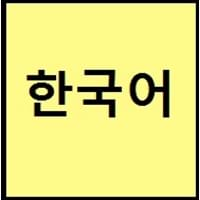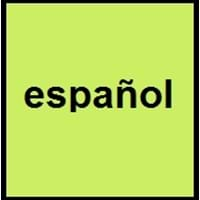Countries
China, Jilin Province, North Korea, South Korea, Yanbian
Andora, Argentina, Aruba, Australia, Belize, Bolivia, Brazil, Canada, Chile, Colombia, Costa Rica, Cuba, Dominican Republic, Ecuador, El Salvador, Equatorial Guinea, France, Gibraltar, Guatemala, Honduras, Jamaica, Latvia, Luxembourg, Mexico, Morocco, Namibia, Netherlands Antilles, New Zealand, Nicaragua, Norway, Panama, Paraguay, Peru, Philippines, Puerto Rico, Russia, Spain, Sweden, Switzerland, Trinidad and Tobago, Turkey, United Kingdom, United States of America, Uruguay, Venezuela, Western Sahara
National Language
North Korea, South Korea
Spain
Second Language
Not spoken in any of the countries
Andora, Aruba, Australia, Austria, Belgium, Belize, Brazil, Bulgaria, Canada, Denmark, France, Germany, Ireland, Israel, Italy, Jamaica, Luxembourg, Morocco, Netherlands, Netherlands Antilles, New Zealand, Philippines, Poland, Portugal, Romania, Russia, Slovenia, Switzerland, Trinidad and Tobago, Turkey, United Kingdom, United States of America, US Virgin Islands
Speaking Continents
Asia
Africa, Asia, Europe, North America, South America
Minority Language
Japan, People's Republic of China, Russia, United States of America
Brazil, France, Germany, Italy, Japan, Morocco, United Kingdom
Regulated By
The National Institute of the Korean Language
Asociación de Academias de la Lengua Española
Interesting Facts
- Korean has borrowed words from English and Chinese.
- Korean has two counting systems. First, is based on Chinese characters and numbers are similar to Chinese numbers, and second counting system is from words unique to Korea.
- One of the world's most phonetic language is Spanish.
- Up to the 18th century, Spanish was diplomatic language.
Similar To
Chinese and Japanese languages
French Language
Derived From
Not Available
Latin
Alphabets in
Korean-Alphabets.jpg#200
Spanish-Alphabets.jpg#200
Writing Direction
Left-To-Right, Horizontal, Top-To-Bottom
Left-To-Right, Horizontal
Hello
안녕하세요. (annyeonghaseyo.)
hola
Thank You
감사합니다 (gamsahabnida)
Gracias
How Are You?
어떻게 지내세요? (eotteohge jinaeseyo?)
Cómo estás?
Good Night
안녕히 주무세요 (annyeonghi jumuseyo)
Buenas Noches
Good Evening
안녕하세요 (annyeonghaseyo.)
Bonne soirée
Good Afternoon
안녕하십니까 (annyeong hashimnikka)
Buenas Tardes
Good Morning
안녕히 주무셨어요 (An-yŏng-hi ju-mu-shŏ-ssŏ-yo)
Buenos Días
Please
하십시오 (hasibsio)
Por Favor
Sorry
죄송합니다 (joesonghabnida)
triste
I Love You
당신을 사랑합니다 (dangsin-eul salanghabnida)
Te Quiero
Excuse Me
실례합니다 (sillyehabnida)
Discúlpeme
Dialect 1
Jeju
Mexican Spanish
Where They Speak
South Korea
Mexico
Dialect 2
Gyeongsang
Cuban Spanish
Where They Speak
South Korea
Cuba
Dialect 3
Hamgyŏng
Puerto Rican Spanish
Where They Speak
China, North Korea
Puerto Rico
How Many People Speak
Not Available
Second Language Speakers
Not Available
Native Name
한국어 (조선말)
Español
Alternative Names
Hanguk Mal, Hanguk Uh
Castellano, Castilian, Español
French Name
coréen
espagnol; castillan
German Name
Koreanisch
Spanisch
Pronunciation
Not Available
[espaˈɲol], [kasteˈʎano]
Ethnicity
Koreans
Not Available
Origin
Before 1st century
210 BC
Language Family
Koreanic Family
Indo-European Family
Subgroup
Not Available
Romance
Branch
Not Available
Not Available
Early Forms
Old Korean, Middle Korean and Korean
Old Spanish and Spanish
Standard Forms
Pluricentric Standard Korean, South Korean standard and North Korean standard
Pluricentric Standard Spanish
Signed Forms
Korean Sign Language
Signed Spanish
Scope
Individual
Individual
ISO 639 6
Not Available
Not Available
Glottocode
kore1280
stan1288
Linguasphere
45-AAA
51-AAA-b
Language Type
Living
Living
Language Linguistic Typology
Subject-Object-Verb
Subject-Object-Verb
Language Morphological Typology
Agglutinative
Fusional, Synthetic
Korean and Spanish Greetings
People around the world use different languages to interact with each other. Even if we cannot communicate fluently in any language, it will always be beneficial to know about some of the common greetings or phrases from that language. This is where Korean and Spanish greetings helps you to understand basic phrases in Korean and Spanish language. Korean word for "Hello" is 안녕하세요. (annyeonghaseyo.) or Spanish word for "Thank You" is Gracias. Find more of such common Korean Greetings and Spanish Greetings. These greetings will help you to be more confident when conversing with natives that speak these languages.
Korean vs Spanish Difficulty
The Korean vs Spanish difficulty level basically depends on the number of Korean Alphabets and Spanish Alphabets. Also the number of vowels and consonants in the language plays an important role in deciding the difficulty level of that language. The important points to be considered when we compare Korean and Spanish are the origin, speaking countries, language family, different greetings, speaking population of these languages. Want to know in Korean and Spanish, which language is harder to learn? Time required to learn Korean is 88 weeks while to learn Spanish time required is 24 weeks.





